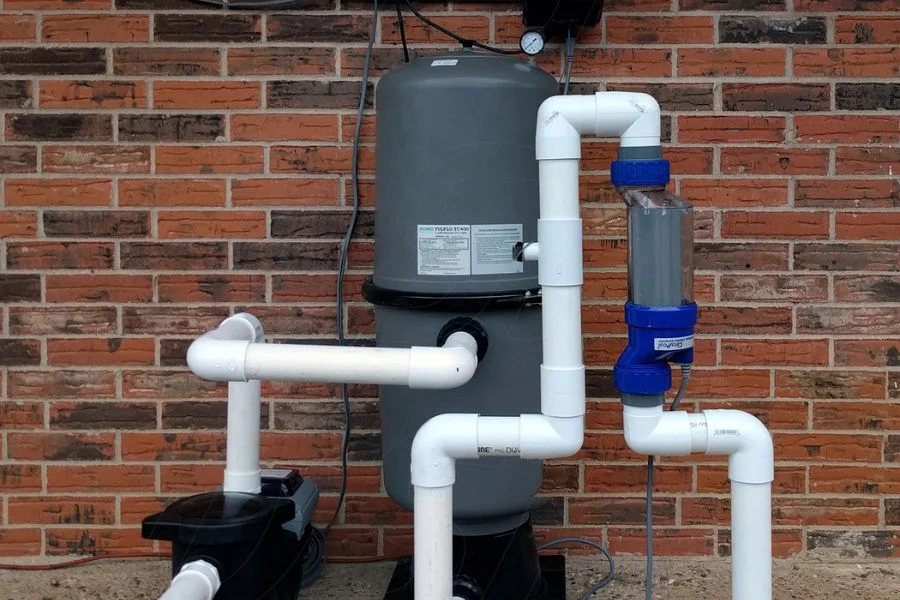Salt is more than just something that makes your pool “saltwater.” It becomes a key part of your pool’s sanitation system.
Understanding how it works is is good to know for keeping your water clean, balanced, and safe.
Using Salt In Your Pool – What Does it Do?
In saltwater pools, salt is added to the water to fuel a saltwater generator (often called a “salt cell” or “SWG”). This generator uses a process called electrolysis to convert the salt (sodium chloride) into chlorine.

Here’s what happens inside a cell:
- The salt dissolves in your pool water and separates into sodium and chloride ions.
- The salt cell generates a low electrical charge to the water.
- This converts the chloride ions into chlorine gas, which quickly dissolves and forms hypochlorous acid (HOCl). This is the active sanitizer that kills algae, bacteria, and other contaminants.
This is why we say a saltwater pool is still a chlorine pool. While you may not be directly adding chlorine, the cell itself generates the components that makes chlorine work.
Also, unlike “traditional” chlorine pools where it is added manually, a salt pool uses the same salt over and over again. The salt is not consumed, but rather it’s part of a loop.
You typically only need to add more when water is lost due to splash-out, backwashing, or draining.
How to Test for Salt in a Pool
Like all other chemistry parameters, salt should also be tested.
However, salt level measurements don’t require exact reading levels. Being close enough is OK in this instance.
You can either get a full testing kit that includes salt, or get standalone salt tester if you already have a kit.
Drop test for sodium chloride (salt) pool owners.
How Much Salt Should Be Added to the Pool?
Before you go adding any salt, test the water first. You might be surprised with how much salt is already in the pool.
While you may not have added it yourself, many chemicals, including most types of chlorine, contain salt. Over time, the salt content can be pretty high.
In general, salt levels should be between 3,000-4,000 ppm. You should definitely be checking your salt generator’s manual for more exact recommendations.
When you need to add salt, use our calculator to determine how much.
How to Increase Salt Levels
Hopefully this isn’t too shocking, but salt levels are increased by adding salt!
But before you start to pour your table salt in, you’ll want salt that is suitable for pools. Typically, the sodium chloride content should be 99% pure at a minimum.
>99% pure, certified USP-Grade salt produced specifically for swimming pool chlorine generators.
You can also use salt that is used for water softeners as well. The only downside is that they might dissolve slower.
When adding the salt, especially in large batches, make sure the pump is running and use a pool brush to disturb particles that fall onto the pool surface to make it dissolve quicker.
How to Decrease Salt Levels
Like CYA and calcium hardness (CH), salt doesn’t just “go away” in a pool. Once it’s in there, it’s in there.
The only way to lower salt levels is by partially draining and refilling with fresh water. This is why testing is important so you don’t overshoot your targets!
Saltwater Generators Can Increase pH Over Time
Salt itself is neutral in terms of pH so it doesn’t directly raise it.
However, the chlorine generated by your salt system tends to drift pH upward over time, so regular pH monitoring and muriatic acid additions may be needed.
Keeping it Salty
Regular testing and maintenance for your saltwater pool will go a long way to keeping the water clean and healthy.
If your chlorine levels seem low, or your salt system throws an error, start by checking your salt level. A quick test and minor adjustment can save you time and prevent bigger issues down the line!


